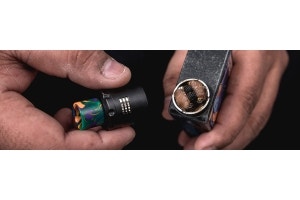Time to Quit Smoking – How to Start for Stoptober 2022
If you’ve started already, congrats – if not, there’s still time!

Stoptober is here – the challenge for smokers to give up cigarettes for 28 days in October. Many have probably already taken the first steps on their quitting journey, but some may only be looking to start today.
You’d be surprised to know that within a short amount of time your body will start to see the benefits, even if you don’t notice them right away.
Day one of quitting smoking
Your first day smoke-free already starts to affect your body, namely that your pulse rate will have started to normalise. Those who smoke tend to have higher blood pressure and an increased heart rate. Within 20 minutes of your last ever cigarette, your heart rate will begin to normalise.
Eight hours later your oxygen levels will begin to recover and the levels of carbon monoxide in your blood will be halved. Although you might not notice it yet, your body is beginning to revert some of the damage caused by smoking.
Congratulations on your first day of not smoking – you can keep it up!
The rest of the first week for Stoptober
A week of no cigarettes is going to give rise to even more changes, some of which you definitely might start to notice.
After two days of being smoke-free, your body will have flushed all of the carbon monoxide from your body. Your lungs will be working to clear out the mucus build-up caused by smoking.
One thing that you will notice will be your sense of taste and smell. Foods you once thought bland and boring may suddenly taste different as your previously dulled senses, improve.
After three days you might even notice that it feels easier to breathe. This is because your bronchial tubes have begun to relax. You’ll soon notice that you have more energy than before, too.
Nicotine withdrawal – the hill that stops many
One of the key things that stops some smokers from quitting each year, is nicotine withdrawal. It’s one of the reasons why the NHS suggests using smoking aids rather than relying just on willpower.
There is a variety of Nicotine Replacement Therapies (NRTs) that are suggested to smokers including nicotine patches and gum. Vaping is also another route for combatting nicotine withdrawal and is often touted as the best way to quit, due to its likeness to smoking in a much less harmful way.
Common symptoms of nicotine withdrawal can include:
You’re most likely to notice these symptoms in the first week of quitting tobacco, but they are easily managed nowadays and will subside over time. Choosing a method to combat your nicotine cravings is going to be important to keep on the wagon.
For those that need a little extra help, there is no shame. Every person is different and every person’s battle with smoking addiction is a challenge. Making sure you have all you need and the support you need can make a big difference.
Smoking cessation aids are there to be of aid during these times so if you do find yourself struggling with willpower alone, there are options available for you.
More ways to keep you on the quitting journey
Check out the NHS’s helpful apps to guide you through quitting smoking, including a personal quit plan which can be tailored to your needs. You can even speak with your GP about quitting smoking.
You don’t have to do it alone. There are support groups available both in person and online or simply talking to friends and family about it can be enough to help you keep to the challenge.


 UAE
UAE









